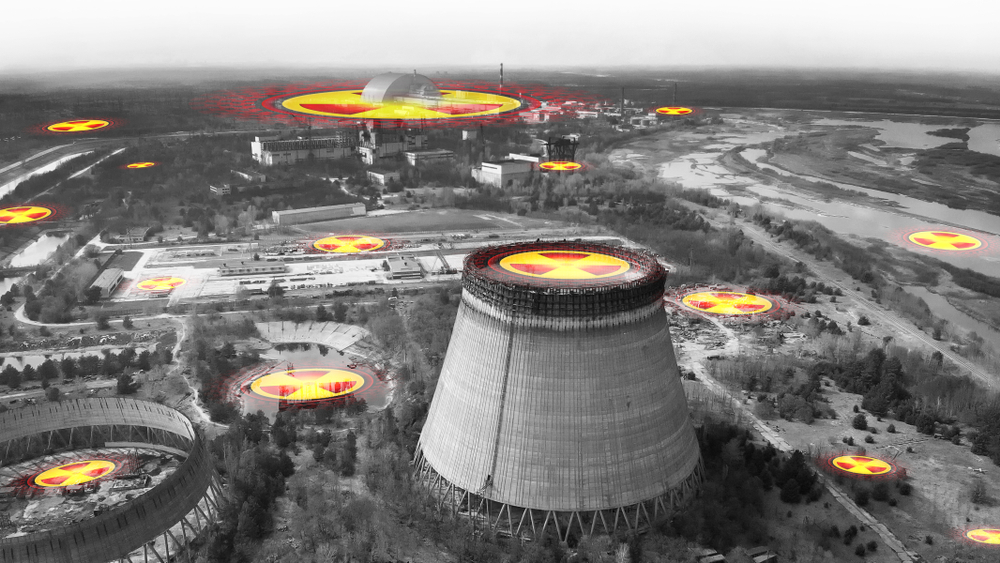A drone strike has damaged the outer shell of Ukraine’s Chernobyl nuclear plant, raising fresh concerns over nuclear safety amid the ongoing war. Kyiv has blamed Russia for the attack, while the Kremlin has denied any involvement. Despite the damage, radiation levels remain stable, according to the International Atomic Energy Agency (IAEA).
Chernobyl Strike Sparks Concerns
Early Friday, a drone armed with a high-explosive warhead struck the protective outer shell of Chernobyl’s nuclear plant, briefly igniting a fire. Ukrainian President Volodymyr Zelenskyy blamed Russia, stating, “A Russian drone with a high-explosive warhead hit the plant’s outer shell and started a fire, which has been put out.”
Despite the alarming incident, the IAEA confirmed that radiation levels inside and outside the facility remain normal. The organization stated on X, “Radiation levels inside and outside remain normal and stable.”
No Immediate Nuclear Threat
The outer shell, constructed in 2016, was designed to cover the original containment structure built after the 1986 disaster. The Ukrainian Emergency Service shared an image showing a hole in the outer shield, which weighs around 40,000 tons and is large enough to fit Paris’ Notre Dame Cathedral inside.
Oleksandr Kharchenko, director of the Center for Research on Energy and Clean Air, reassured the public, stating, “The protective structure is strong and reliable, though it has been damaged.”
Ukraine’s state nuclear regulator reported that the impact also caused damage to a maintenance garage but did not pose an immediate danger to the plant.
Russia Denies Involvement
The Kremlin has denied responsibility for the attack. Russian government spokesman Dmitry Peskov dismissed the accusations, saying, “There is no talk about strikes on nuclear infrastructure, nuclear energy facilities. Any such claim isn’t true. Our military doesn’t do that.”
Furthermore, Peskov alleged that Ukraine staged the strike to undermine peace talks, stating, “It’s obvious that there are those in the Ukrainian government who will continue to oppose any attempts to launch a negotiation process.”
Meanwhile, Russian Foreign Ministry spokesperson Maria Zakharova described the incident as a “reckless” act by Kyiv and reminded that Russia had been part of the international effort to build the containment structure that was damaged.
Global Response and Nuclear Safety Concerns
IAEA chief Rafael Grossi acknowledged growing nuclear safety risks, posting on X, “The strike and the recent increase in military activity near Zaporizhzhia underline persistent nuclear safety risks. The IAEA remains on high alert.”
Ukraine plans to present detailed information about the attack to U.S. officials at the Munich Security Conference. Andrii Yermak, head of Ukraine’s Presidential Office, confirmed this in a Telegram post.
Zelenskyy Condemns Russia
Zelenskyy insisted that the attack was further proof that Russian President Vladimir Putin is not pursuing peace. “Russia must be held accountable for what it is doing,” he wrote on Telegram. He further warned, “The only state in the world that can attack such facilities, occupy the territory of nuclear power plants, and conduct hostilities without any regard for the consequences is today’s Russia. And this is a terrorist threat to the entire world.”
The drone strike on Chernobyl has once again raised fears of nuclear disaster in Ukraine. Although radiation levels remain stable, the attack highlights the ongoing risks posed by military activity around nuclear sites. With conflicting narratives from Ukraine and Russia, the international community remains on high alert as the conflict continues.



